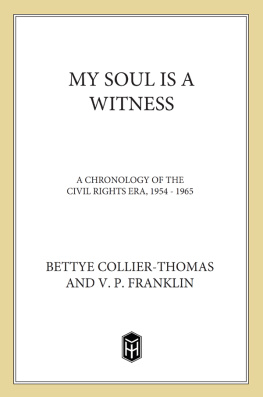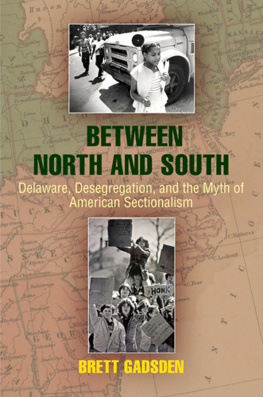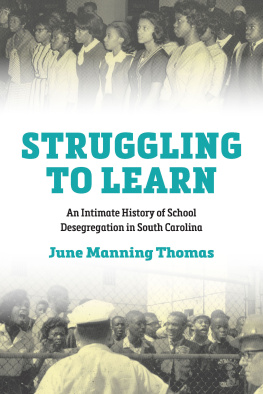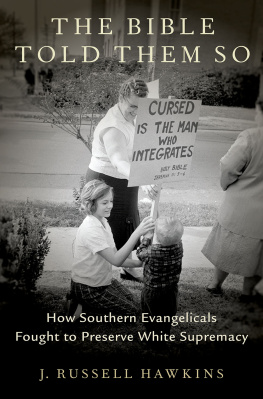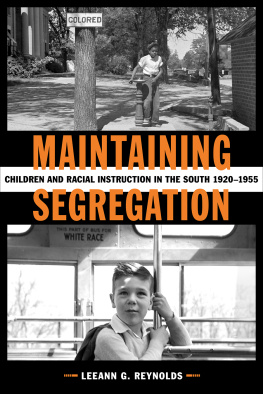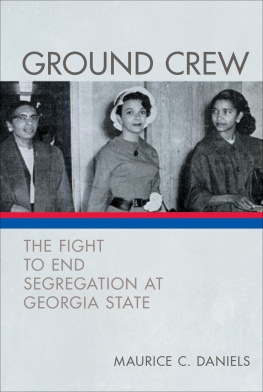www.upress.state.ms.us
The University Press of Mississippi is a member of the Association of American University Presses.
Copyright 2014 by University Press of Mississippi
All rights reserved
Manufactured in the United States of America
First printing 2014
Library of Congress Cataloging-in-Publication Data
Day, John Kyle, author.
The Southern Manifesto : massive resistance and the fight to preserve segregation / John Kyle Day.
pages cm
Includes bibliographical references and index.
ISBN 978-1-62846-031-5 (hardback) ISBN 978-1-62846-032-2 (ebook) 1. Segregation in educationLaw and legislationSouthern StatesHistory. 2. Discrimination in educationLaw and legislationSouthern StatesHistory. 3. Civil rights movementsSouthern StatesHistory20th century. 4. Segregation in educationLaw and legislationUnited StatesHistory. 5. Discrimination in educationLaw and legislationUnited StatesHistory. 6. Southern StatesRace relationsHistory20th century. 7. Topeka (Kan.). Board of EducationTrials, litigation, etc. 8. Brown, Oliver, 19181961Trials, litigation, etc. I. Title.
KF4155.D39 2014
344.73'07980975dc23 2013044475
British Library Cataloging-in-Publication Data available
IN HONOR OF J. K. DAY, M.D.
Acknowledgments
Robert Collins suggested the topic from which this book evolved. I thank my colleagues with whom I studied and under whom I served during my education at Fayetteville and Columbia, with whom I taught at Quincy and Monticello, and who read and edited various drafts, the librarians who facilitated my research, and the present and former staff of the University Press of Mississippi for taking this manuscript to completion.
This book was financially supported by the University of MissouriColumbia, the Lyndon Baines Johnson Foundation and Dwight D. Eisenhower Foundation, the Deep South Regional Humanities Center at Tulane University, the Institute for Southern Studies at the University of South Carolina, Phi Alpha Theta National History Honor Society, and the University of Arkansas at Monticello.
The Southern Manifesto
Introduction:
The Manifesto That Made Massive Resistance
On March 13, 1956, ninety-nine members of the Eighty-Fourth United States Congress promulgated the Declaration of Constitutional Principles, popularly known as the Southern Manifesto. This southern profert formally stated opposition to both federally mandated public school desegregation as declared in the U.S. Supreme Court decision Brown v. Board of Education (1954) and the emerging Civil Rights Movement that ultimately destroyed the southern caste system known as Jim Crow. Today, the Southern Manifesto is justifiably viewed as the single worst episode of racial demagoguery in the era of postwar America (19481973). Yet, at the time, most members of the Southern Congressional Delegation boasted that they played a part in the statements drafting, while many claimed that they had conceived of the project in the first place. While historians recognize the name of the Southern Manifesto and agree on these basic facts, the document remains both misunderstood by scholars and largely forgotten by the public-at-large. Historians disagree over who conceived of this statement, who wrote it, and its implications for postwar American history in general and the Civil Rights Movement in particular.
The neglect to thoroughly consider the high drama inherent in the political consequences of the Civil Rights Movement obscures a full comprehension of this most important social revolution in American history. This misunderstanding partly stems from the lack of critical analysis of the United States Congress and its role in combating Browns implementation. Historians typically use the memoirs of contemporary insiders to study the Senate, while political scientists usually focus upon the U.S. House of Representatives. In contrast, this book employs the theoretical model of David R. Mayhews Congress: The Electoral Connection. Mayhews theory that the United States House of Representatives is the immediate reflection of American public opinion is widely accepted. That is, as members of the House of Representatives stand before the electorate every two years, their professional energies are primarily directed toward satisfying the concerns of the constituents who elected them so that they may be returned to Congress. The Houses incumbents are thus permanent seekers of reelection. But, as United States senators are subject to election only every six years, while just approximately one-third of the Senate membership stands before their constituents every two-year election cycle, senators are generally thought to be more insulated from the electorate and, therefore, possess much more freedom of action. Applying Mayhews theory to the Southern Congressional Delegation in general and the Senates Southern Caucus in particular, this study uses the promulgation of the Southern Manifesto as a test case to understand how the postwar Southern Congressional Delegation successfully preserved white supremacy and thus satisfied the concerns of their enfranchised white constituents for decades after Jim Crow was dubbed illegitimate by most other Americans and became a diplomatic embarrassment to the United States before the court of world opinion.
Indeed, the most immediate impact of the Brown decision was within the realm of national partisan politics. Assuming it would take most southern school districts at least one year to comply with the desegregation edict, Browns corollary, known as Brown II (1955), vaguely ordered southern school districts to desegregate with all deliberate speed. This ambiguous timetable made the first school year of planned large-scale desegregation incidentally coincide with the 1956 national elections. In the winter of 19551956, seminal events in the Civil Rights Movementsuch as the Emmett Till lynching in Mississippi as well as the Montgomery Bus Boycott and the Autherine Lucy riots in Alabamabrought the struggle for black freedom to national attention. In January 1956, the opening of the second session of the Eighty-Fourth Congress brought a series of civil rights and education appropriation bills out of committee for formal consideration by both the House of Representatives and the Senate.
The Souths congressional incumbents thus feared that if they did not block Browns implementation, the consideration of these civil rights bills, and attempts to deny federal school funding to districts that openly defied the Supreme Courts edict, their white constituents would support opposing candidates in both the 1956 Democratic primaries and the general election. Specifically, another third-party movement threatened the Southern Congressional Delegation if the Democratic Party formally endorsed Brown and supported federal civil rights legislation. Potentially more potent than the 1948 Dixiecrat Revolt, another southern third party devoted to states rights and white supremacy would divide the Democrats to the advantage of the popular Republican incumbent, President Dwight David Eisenhower. Such a scenario inevitably produced a major turnover in elected officials throughout the South. Republicans and/or intransigent segregationists could be elected throughout Dixie, defeating Democratic incumbents. The South faced the loss of control over congressional committees, the basis of its federal political power and the bulwark of the southern caste system. The Democrats, moreover, lost their congressional majorities and faced a major political realignment, whereby the New Deal coalition disintegrated and the Democracy became the nations minority party.


